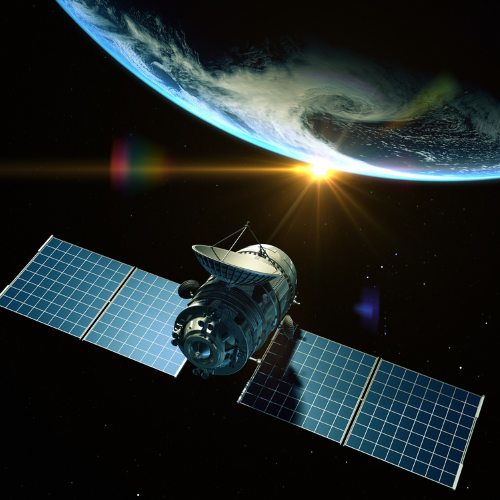Radiall and the Rise of Next-Gen Interconnects for the Space Industry
As humanity pushes further into space exploration, the need for highly reliable interconnect technologies has never been greater. Spacecraft and satellites operate in some of the harshest conditions imaginable–facing extreme temperatures, intense radiation, vacuum environments and mechanical stresses during launch and operation. Recent advances in materials science, miniaturization and emerging technologies such as fiber optics and wireless interconnects are revolutionizing the field, enabling more efficient, durable and high-speed data transmission solutions.
High-reliability connectors serve as the backbone of spacecraft and satellite systems, ensuring the seamless transmission of power, signals and data between critical components. In fact, space connectors must endure extreme conditions, including violent launch vibrations, prolonged exposure to radiation and the vacuum of space, all while maintaining flawless functionality. These connectors are essential for mission success, facilitating communication between onboard instruments, power distribution networks and propulsion systems. As modern space missions demand increased miniaturization and higher data transmission speeds, engineers are developing more compact, lightweight and resilient interconnect solutions. The evolving needs of deep-space probes, crewed missions and satellite constellations continue to push the boundaries of connector technology, driving advancements in durability, redundancy and efficiency.
As space missions become more complex and data-intensive, traditional interconnect solutions are evolving to meet new demands. One of the most significant advancements is the miniaturization of high-density connectors, which enable smaller and lighter spacecraft without compromising performance. Fiber optic interconnects are also gaining traction, offering high-speed, low-latency data transmission while being immune to electromagnetic interference. Additionally, wireless and contactless power and data transfer technologies are being explored to reduce mechanical wear and potential failure points in traditional connectors. These emerging technologies are shaping the future of space interconnects, paving the way for more resilient, efficient and long-lasting spacecraft systems.
Given the critical role of interconnects in spacecraft, rigorous testing and qualification processes are essential to ensure their reliability in extreme space environments. Space-grade connectors must comply with stringent standards set by organizations such as NASA, the European Space Agency (ESA) and private aerospace companies, each imposing strict requirements for mechanical durability, thermal stability and radiation resistance. As space exploration expands, advancements in testing methodologies and qualification processes will continue to play a crucial role in ensuring the success of both government and commercial space missions.
The future of space-grade interconnect technologies is being shaped by advancements in materials, manufacturing and design innovation. Companies like Radiall are at the forefront of this evolution, developing high-performance connectors that support the demands of modern space missions. The rise of private space companies is also accelerating the pace of development, driving demand for more cost-effective, high-performance connectors that can support large-scale satellite constellations and deep-space exploration missions. Additionally, sustainability is becoming a growing concern, with increasing efforts to develop reusable and repairable interconnect solutions to reduce space debris and mission costs. As space agencies and private companies expand their reach beyond Earth, Radiall’s innovations will continue to drive the next generation of space interconnect solutions, ensuring reliability in the harshest environments.


